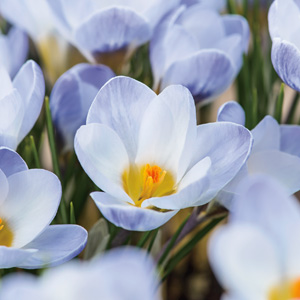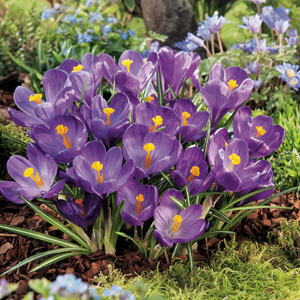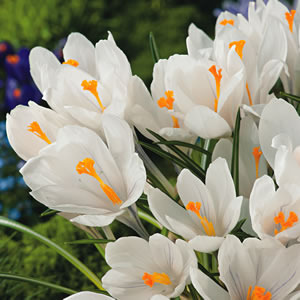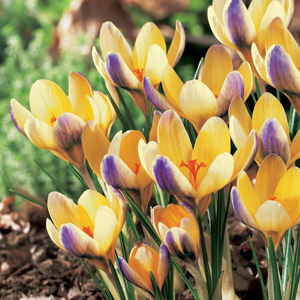Dutch Crocus Growing Guide

What is Dutch Crocus?
Dutch Crocus (Crocus vernus) also known as Crocus, Snow Crocus or Winter Crocus are a corm like herbaceous perennials who’s flowers emerge before the fine grassy foliage. Dutch Crocus is a member of the iris (Iridaceae) family, and is made up of around 80 species of late Winter to early Spring flowering corms. They are drought and frost tolerant and require little care once established.
Benefits of Growing Dutch Crocus
Dutch Crocus makes excellent plants for rock gardens and they also make good container plants. When planted en masse they make for a beautiful Spring display. Once established, these charming beauties can produce up to four flowers per corm. Dutch Crocus blooms are the largest of the Crocus, and they are one of the easiest to grow.
How to Grow Dutch Crocus
Climatic Zones
Cool, temperate, arid. Crocus are best grown in areas with cold Winters. Success can be found in warmer regions however corms that flower well in the first year may not flower well in succeeding years due to insufficient chilling. They tolerate temperatures to -15°C.
Plant Size
Height: 8-15cm, Width: 5cm
When To Plant Dutch Crocus
Plant in Autumn.
Soil Preparation
Dutch Crocus require a well drained soil. Digging compost or well decayed manure through the soil will improve growth.
How To Plant Dutch Crocus
Plant in full sun, 7-10cm apart with the corm 10cm under the soil. Plant up to twice as deep in areas with mild winters.
Dutch Crocus Plant Care
Dutch Crocus require very little care. At the end of the season you can remove the dead foliage however it is essential not to remove leaves before they turn yellow, as they are important in building up next year’s corms.
Before flowering (Winter) apply a light covering of a complete plant food or blood and bone.
Dutch Crocus like to be kept moist, but do not like being waterlogged. Avoid excessive watering when corms are dormant. Give newly planted corms a thorough watering and then water again only if very dry.
Corms can be left undisturbed for many years. They can be dug up after the foliage has died down, if required. Store in a dry, airy position. A chilling period of 6 weeks before planting is recommended in mild Winter climates.
Watch out for snail and slugs. Aphids may appear during warmer weather. Birds also seem to be attracted to the flower and can sometimes pull out the whole plant.
Recommended Dutch Crocus Varieties
Brighten up your late Winter garden beds or pots with Dutch Crocus. Purple, white, yellow flowers in a nest of wavy grassy green foliage.










